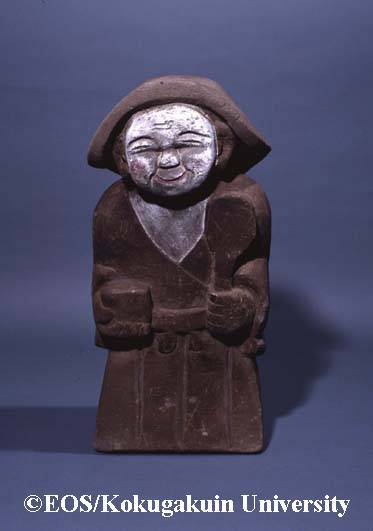- トップ
- Encyclopedia of Shinto
- Tanokami
Encyclopedia of Shinto
| Main Menu: | |
| Links: |
詳細表示 (Complete Article)
| カテゴリー1: | 2. Kami (Deities) |
|---|---|
| カテゴリー2: | Kami in Folk Religion |
| Title | Tanokami |
| Text | [Ta no kami] "Kami of the rice paddy," a tutelary of rice production. The general term ta no kami can be found nationwide, but regional variations exist in the specific names used to refer to the kami. Some include nōgami (farming kami) in the northeast, sakugami (kami of production) in Yamanashi and Nagano, and tsukurigami (kami of making) in the Kinki area. People in the Izumo region use the term i no kami (kami of the wild boar), while the term jigami (land kami) is used in the Inland Sea region, and ushigami (kami of cattle) in Kyushu. The rice paddy kami has also undergone synthesis with Ebisu in eastern Japan, and with Daikoku in the west, leading to different cults from those of fishing and commerce normally associated with these two deities. Festivals celebrating the kami of the rice paddy are ordinarily distributed between spring and autumn in accordance with the various stages of the agricultural process, but they are especially noteworthy around the time of spring rice transplanting, while additional rituals may be held at harvest. Examples of the former include observances called saori (greeting the rice-field kami) and sanaburi (or sanoburi, "sending off the rice-field kami"), while the latter include i no ko ("child of the boar") and tōkan'ya ("tenth night"). The cycle of spring and autumn festivals celebrating the rice paddy kami are seen nationwide, and appear to be linked to legendary concepts of identity between the rice paddy kami and the mountain kami (yama no kami) in those two seasons. Namely, in spring it is believed that the mountain kami descends from the mountain to the village, becoming the kami of the rice paddy, and in fall, the rice paddy kami leaves the field and returns to the mountain, where it becomes the mountain kami. Certain differences exist in some regions, however. In the ritual called aenokoto of the Noto area, for example, the same kami circulates between rice paddy and the home, while in other examples, the deity is believed to remain in the field as a "guardian watch." The tradition of the "watch" kami is related to the legend that all the kami throughout Japan gather at the Izumo Shrine in the tenth lunar month (called kannazuki, or "month without kami"), while the "watch" kami alone remains behind to keep guard. Since the time of folklorist Yanagita Kunio, the theory that the rice paddy god is actually an ancestral kami (sojin) has gained wide acceptance. -Iwai Hiroshi |





